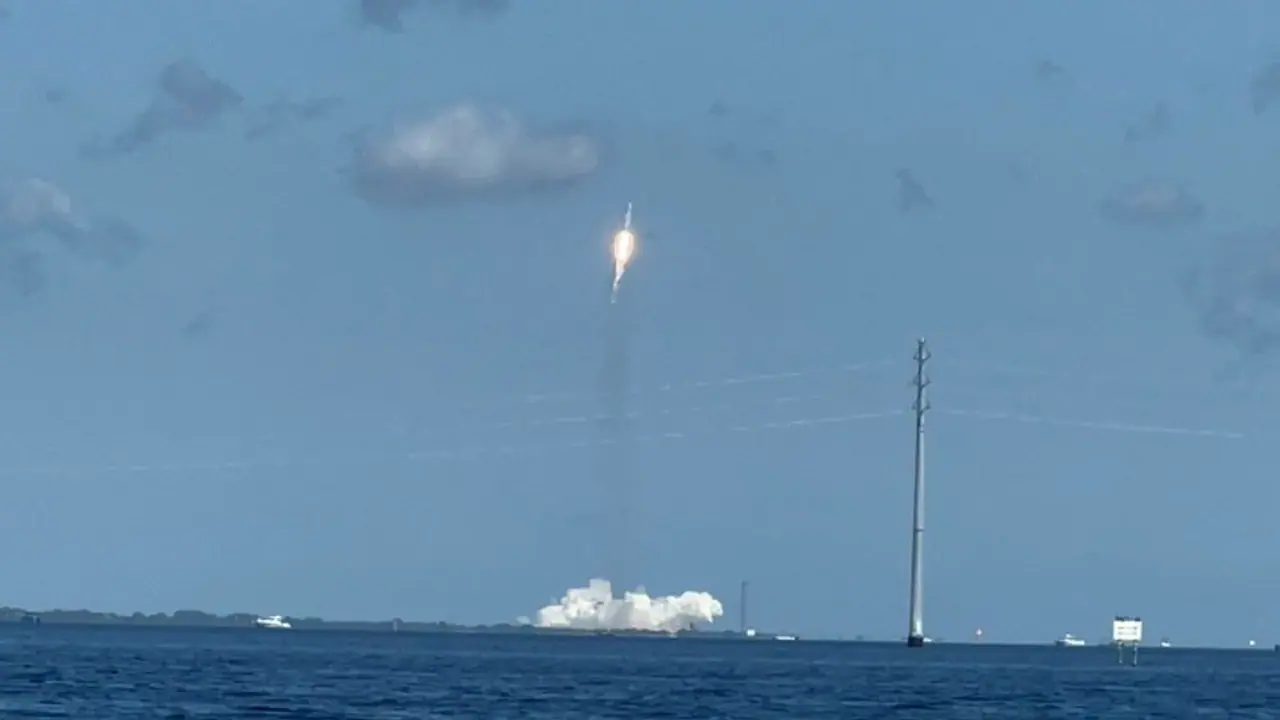NASA's ambitious Europa Clipper spacecraft has blasted off on a groundbreaking mission to search for signs of alien life on Europa, one of Jupiter’s most mysterious and promising moons.
NASA's ambitious Europa Clipper spacecraft has blasted off on a groundbreaking mission to search for signs of alien life on Europa, one of Jupiter’s most mysterious and promising moons. The spacecraft lifted off from Cape Canaveral at 16:06 GMT after a brief delay caused by Hurricane Milton, which forced NASA to postpone the launch the previous week.

Europa Clipper will now embark on an extraordinary journey, traveling 1.8 billion miles to reach its destination—a deeply enigmatic moon orbiting Jupiter. The spacecraft is not expected to arrive until 2030, but the discoveries it might make could revolutionize our understanding of life in the solar system.
Europa, which is about the same size as Earth’s moon, is located 628 million kilometers from Earth. While it shares similarities in size with our moon, Europa is far brighter, reflecting five times more sunlight due to its thick surface of water ice. Beneath its icy crust, which could be as much as 25 kilometers thick, scientists believe there may be a vast saltwater ocean. This ocean may hold twice as much water as all of Earth's oceans combined, potentially harboring the essential conditions for life.
Scientists have long speculated that Europa could support life, and the mission aims to explore whether the moon’s ocean contains the right ingredients—liquid water, organic materials, and a stable heat source—that might allow life to exist. "If we discover life so far away from the Sun, it would imply a separate origin of life to the Earth," Mark Fox-Powell, a planetary microbiologist from the Open University, was quoted as saying in a BBC report. "That is hugely significant because if that happens twice in our solar system, it could mean life is really common."
Years in the making, the Europa Clipper mission had a tense final countdown. Hurricane Milton’s approach to Florida last week forced NASA to hurriedly move the spacecraft into shelter to protect it from potential damage. After extensive checks of the launchpad and equipment, engineers gave the all-clear for a successful launch at 12:06 PM.
Europa Clipper’s primary mission will be to map nearly the entire moon’s surface and gather vital data on its icy shell. Equipped with cutting-edge instruments, the spacecraft will pass by Europa approximately 50 times, flying through suspected water plumes and collecting dust particles that may reveal clues about the composition and habitability of the hidden ocean.
This mission is one of the most significant deep-space explorations to date, fueled by a desire to answer fundamental questions about our place in the universe. “There’s no profit being made. This is about exploration and curiosity, and pushing back the boundaries of our knowledge,” Professor Fox-Powell told BBC.
The spacecraft will make use of gravitational assists—known as the "sling-shot effect"—from Earth and Mars to propel itself to Jupiter. This method allows the spacecraft to conserve fuel for its long journey. Once Clipper approaches Europa in 2030, it will re-ignite its engines to settle into the correct orbit around the icy moon.
Clipper’s mission will also follow in the footsteps of NASA’s previous encounters with Europa, including the pioneering flybys conducted by the Voyager 1 and 2 spacecraft in the late 1970s, and the Galileo spacecraft’s close-up images in the 1990s. These missions first raised the tantalizing possibility that Europa’s surface, marked by deep fractures and reddish-brown streaks, might conceal an ocean beneath. NASA’s Hubble Space Telescope later captured possible plumes of water erupting from Europa’s surface, further intriguing scientists about the moon's potential for habitability.
A critical instrument aboard the spacecraft is called REASON (Radar for Europa Assessment and Sounding: Ocean to Near-surface), designed by Britney Schmidt, a professor of Earth and atmospheric sciences at Cornell University. This laser-based radar will peer beneath Europa’s thick ice to map its subterranean ocean and search for features akin to Earth’s tectonic activity, such as subduction zones and magma-like chambers. Schmidt is particularly excited to uncover Europa's geological "plumbing," as these areas might reveal vital clues about the potential for life.
Schmidt and her team tested REASON in Antarctica, a landscape similar to Europa’s frozen terrain. However, Clipper’s instruments will face far greater challenges. The spacecraft must endure harsh radiation belts surrounding Jupiter. “Much of the electronics are in a vault that's heavily shielded to keep out radiation,” Schmidt explained, adding that each flyby will expose the spacecraft to radiation equivalent to one million X-rays.
NASA’s mission to Europa is racing against time and competition. The European Space Agency (ESA) launched its Jupiter Icy Moons Explorer (JUICE) spacecraft in 2023, which is also headed to explore Jupiter’s moons, including Europa and Ganymede. However, Europa Clipper is expected to overtake JUICE and arrive at Europa first due to a more efficient trajectory that uses gravitational assists.
While the mission promises to significantly advance our understanding of Europa, NASA scientists remain cautious in their predictions. Michelle Dougherty, a professor of space physics at Imperial College London, explained that the mission will primarily search for signs of habitability rather than direct evidence of life. "We are searching for the potential for habitability, and you need four things—liquid water, a heat source, and organic material. Finally, those three ingredients need to be stable over a long enough period of time that something can happen," she said.
If the Europa Clipper mission succeeds in its scientific objectives, it could pave the way for future missions to land on the moon’s surface. By analyzing the composition of the ice and identifying areas where the ocean may be accessible, scientists hope to pinpoint a landing site for a future Europa lander.
The international team overseeing the mission includes experts from NASA, the Jet Propulsion Laboratory (JPL), and Johns Hopkins University’s Applied Physics Laboratory (APL), making this a truly global effort in humanity’s quest to explore the outer reaches of the solar system.
